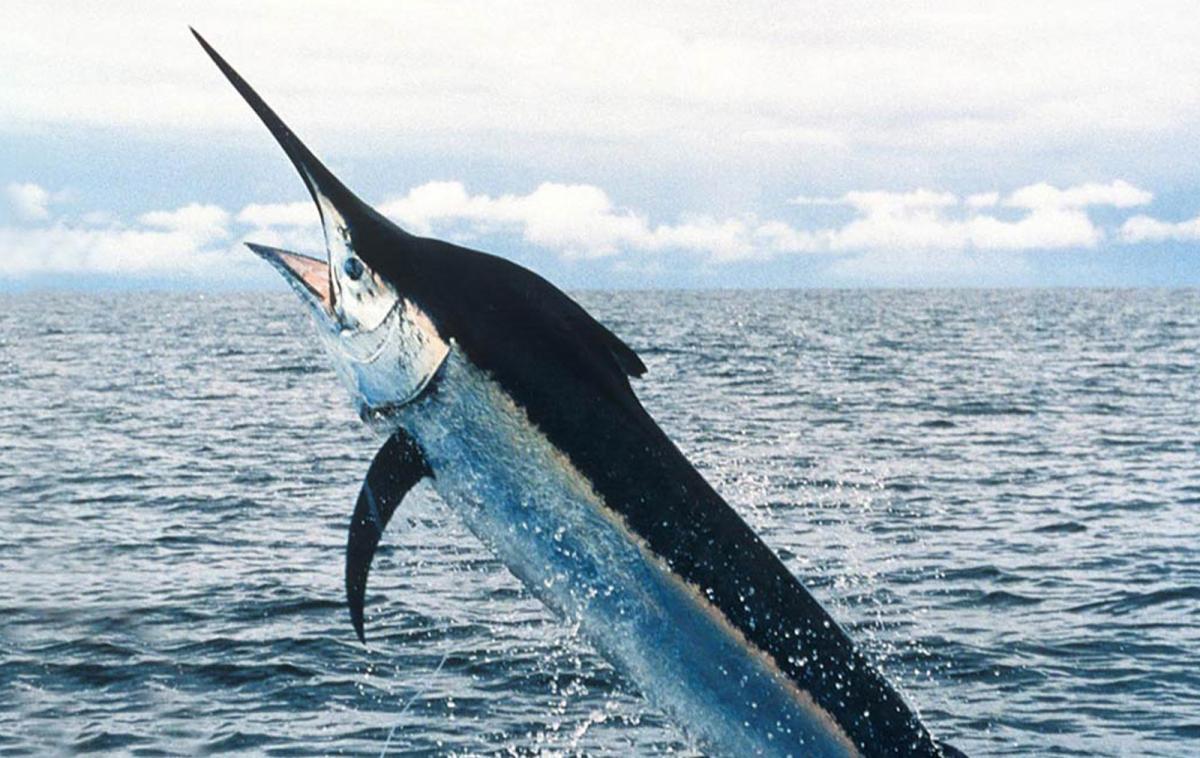Saving our fisheries and feeding a growing population are both possible
Blue Marlin, one of the most sought-after game fish
Fish have long been hailed for their remarkable nutritional value: once upon a time kids were forced to swallow cod liver oil, because it was considered “brain food.” Today, doctors say that switching from red meat to seafood can lower the risk of heart disease and cancer in humans. Unfortunately, we’ve overdone it at the big seafood buffet: industrial fishing and bad management are making it increasingly hard to eat seafood sustainably.
In his new book The Perfect Protein, Andy Sharpless, CEO of the advocacy organization Oceana, argues that we can protect this healthy food source and feed our growing population for years to come, if only we manage our fisheries better. He even has some great recipe ideas in the book, to help drive home his optimistic message.
The book’s central idea is built on a paradox: it advocates saving fish so we can eat more of them. “It does seem kind of counterintuitive, doesn’t it?” Sharpless laughs.
The logic of saving our fish populations so that we can eat more of them is the same logic one brings to saving money in a bank account or investing in the stock market, Sharpless says. We save or invest our money for the purpose of eventually spending what we make, either from interest or dividends. But by overfishing we have eaten into the capital (no pun intended), which is never a good idea.
“The problem is, we love [seafood] so much that we have, in a very short-sighted way, depleted the ocean bank account, so that the ‘interest,’ if you will, that an abundant ocean could provide is no longer big enough to feed the mouths that want to eat it,” Sharpless explains.
But better management can increase the productivity of the ocean quite rapidly — within five or 10 years, Sharpless insists. “If we stop overfishing, we can rebuild the bank account in the ocean and see a sustainable level of return each year.” In fact, he says, if a relatively short list of countries do a good job of managing their oceans, we could see an improvement on the order of 20 to 40 percent in the total world catch from the previous peak in the late 1980s — and have that food source available for people to eat forever.
Sharpless has three basic rules for good fisheries management: 1) Set and enforce scientific quotas; 2) Protect the nursery habitat, so small fish can grow to reach reproduction age; 3) Manage the accidental killing of non-target species, called bycatch. “If we do those three things, we will increase ocean abundance, we will increase spawning stock, and we will have more fish — typically in a five or 10 year period,” Sharpless says.
But increasing the seafood supply isn’t just about following these three rules or placing tighter controls on industrial scale fishing, which Sharpless says is the biggest threat to the world’s fisheries. It isn’t even about eating less seafood. Rather we need to think about eating seafood differently.
Eating farmed fish, for example, seems like it should be part of the solution: “If you’re eating a farmed fish, after all, you’re not eating a wild fish; and if the wild fisheries need some space to rebuild, let’s all go eat farmed fish,” Sharpless says. “That’s an intuitive, but in some cases wrong logic.”
There are several categories of farmed fish, he explains. The problematic ones are farmed fish that eat other fish. A common example is salmon. Farmed salmon eat wild fish: the salmon farmers feed their stock wild fish that have been ground into little pellets that look like dog food. In the process, Sharpless says, fish farmers convert four or five pounds of wild fish into one pound of farmed fish, resulting in an overall reduction of the wild fish population.
At the “good” end of fish farming are shellfish: mussels, clams and oysters. “This is something about which we are extremely enthusiastic, and people ought to eat as much of those good-tasting things as they can stomach,” Sharpless says.
Think about how they grow, he points out. “They grow by filtering the water…They are eating things that we don’t want to eat. An oyster farmer is that rarest of things in the world: a profit-making enterprise who is providing jobs [and] who wants — indeed must have — a clean ocean, and therefore is an ally in the battle against pollution.”
Sharpless likes to suggest four or five, simple rules for eating seafood: 1) eat wild; 2) eat smaller species; 3) eat local or domestic; 4) eat all the oysters, clams and mussels that you can; and 5) swear off shrimp.
“There’s no way to eat a shrimp and feel good about what you’re doing for the future,” Sharpless says. “Wild shrimp are caught in a process that produces very high levels of bycatch. And shrimp are farmed in shallow pens, typically in tropical countries, that are often managed in a very short-sighted way and end up wrecking and contaminating coastal zones.”
Still, Sharpless sees hope. “One of the wonderful things about fish is they are an incredibly powerful and robust part of nature,” he says. “If we will give them a little bit of room, they will rebound.”
And it's not like having to wait a hundred years for the rainforest to grow back, he adds. “You can in our lifetimes go out into the ocean and see that there are more fish out there, that we can raise our catch levels, that we can give people more jobs, and that people can eat a lot of this healthy and wonderful protein.”
This story is based on an interview that aired on PRI's Living on Earth with Steve Curwood
